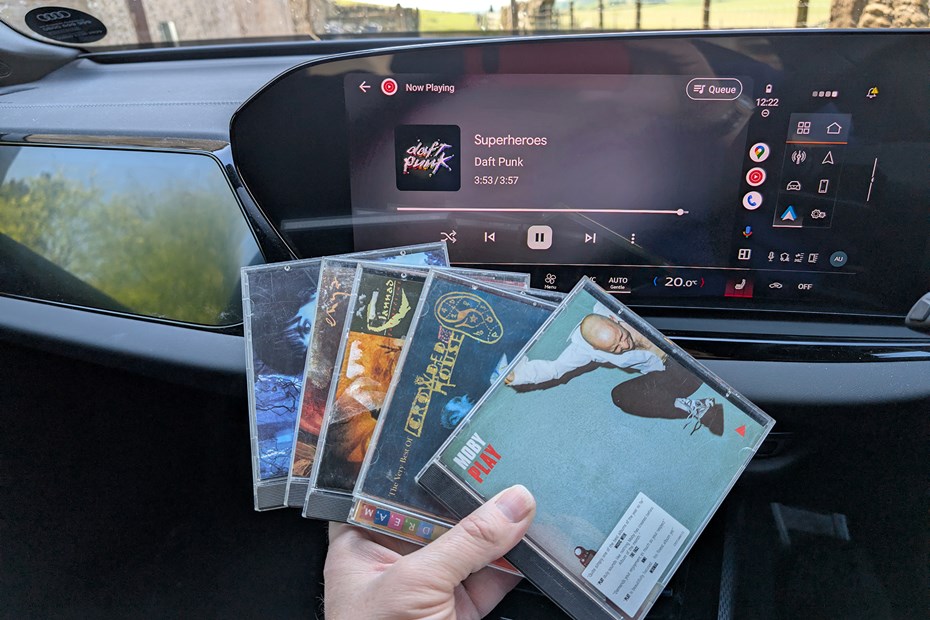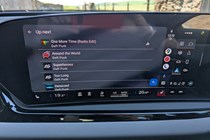As someone who’s spent far too much of my life driving and listening to music, podcasts and audiobooks, I’ve tried just about every method of playing music from my phone in my car. Whether it’s brand-new with the latest tech, one of my classics with a cassette player, or something in between, I’ve been there and done that.
Your phone is a gateway to endless music, from your own collection to streaming services like Spotify, YouTube Music, and Amazon Music. Connecting it to your car means you’re never stuck with just the radio. Even in older cars, there are plenty of ways to enjoy your favourite tracks. But it’s not always straightforward – and depending on what you’re driving, you’ll have different options. So here’s how to make it work.
How to play music from my phone in my car
Connecting streaming services isn’t always totally straightforward. But fear not — I’ve rounded up the best ways to effortlessly stream music from your phone to your car. At Parkers, we understand that not everyone has the latest car with an advanced infotainment system, so I’ve included easy solutions for older cars, too – and even classics with cassette decks!
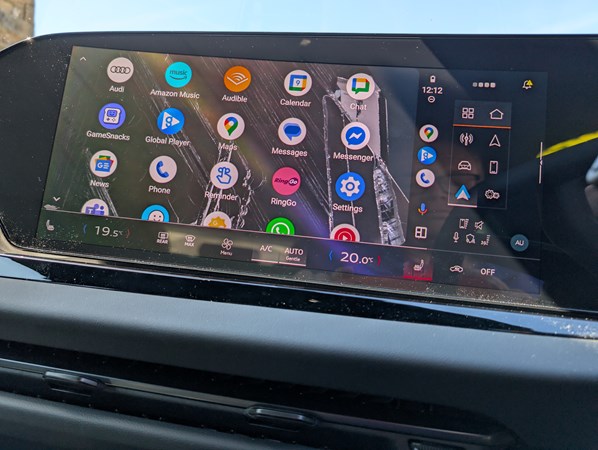
Apple CarPlay or Android Auto: the best experience (if you have it)
Modern cars with touchscreen infotainment systems often offer Apple CarPlay or Android Auto. These systems turn your car’s screen into an extension of your phone, giving you access to music, navigation, calls, and messages.
Connect via USB or wirelessly (if supported), and you’ll see many of your phone’s apps right on the car’s display. It’s the most seamless experience for playing music, but it can be buggy, especially on anythung that isn’t the latest generation, and your phone can overheat in direct sunlight. Consider placing it in a shaded spot.
- Pros: Full control, voice commands, familiar interface
- Cons: Only the latest cars have it, can be buggy, phone may overheat
Factory-fitted Bluetooth: wireless flexibility
This is very widely-used, and for good reason. Bluetooth connectivity began making its way into mainstream cars in the late noughties. Once you’re connected up you’ve got a stable link for phone calls and audio. In some cases, this is purely an audio link, and you’ll need to use your phone’s screen to select music or answer calls. If this is the case, make sure you invest in a sturdy phone holder and only interact with the device while you’re stationary.
Bluetooth links are generally stable and once paired, you won’t have to worry about the connection dropping out as long as your phone stays in the car. Make sure you have plenty of charge, as streaming can be heavy on your phone battery.
- Pros: Wireless connectivity, excellent sound quality from a good phone
- Cons: Limited compared with full smartphone connectivity
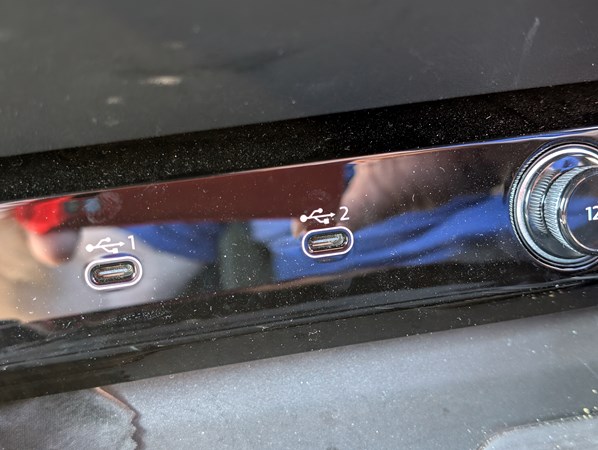
Other USB connectivity: rock-solid connection
Many cars have USB sockets to allow you to play music from your phone, even without the benefit of Android Auto or Apple CarPlay. Screen mirroring is also available on some cars, where the main screem shows what’s on the phone. These are good, as you get full control of the media on your phone through the car’s built in stereo or steering wheel controls.
Please do bear in mind that some older models did come with their own flavours of USB connectivity, such as Fiat’s unreliable ‘Blue&Me’ system. These systems don’t always work with modern smartphones, and if they do often only function for music that’s downloaded to your device – no good for streaming services.
- Pros: Full control through the stereo, excellent sound quality
- Cons: Limited compared with full smartphone connectivity, older systems won’t stream
Best retro-fit options for older cars
Retro-fit accessories can bring music streaming to even the oldest cars without compromising their classic interior. From Bluetooth receivers and AUX adapters to full touchscreen smart screens, there’s a solution. Going for an aftermarket option gives you flexibility without expensive custom installations.
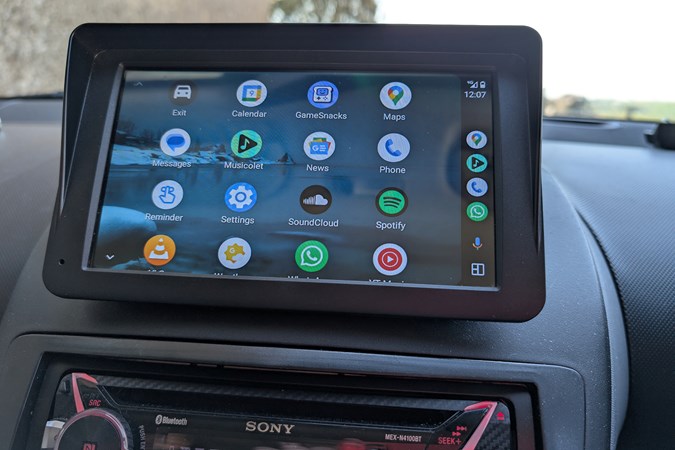
Smart screens: brilliant convenience for modern cars
Smart screens offer Android Auto or Apple CarPlay without needing to replace your car’s stereo. They mount on the dashboard and connect to your phone via Bluetooth or USB, providing full navigation, music, and voice control.
These screens are a great upgrade for older cars, and you can move them between vehicles. However, they can look like an add-on, and for the best sound, you’ll want to connect them to your car’s audio system.
- Pros: Full smartphone integration, flexible, adds CarPlay/Android Auto
- Cons: Looks like an add-on, can be a target for theft, sound quality varies
Bluetooth receivers: modern convenience
Bluetooth receivers are the easiest way to bring wireless music to older cars, especially those with a 3.5mm AUX input. These became popular in the 1990s and 2000s, when portable CD players and MP3 devices dominated. If your car has an AUX input, a Bluetooth receiver can transform it into a wireless audio system.
Simply pair your phone with the receiver, plug it into the AUX port, and you’re set. These devices are compact, avoiding the clutter of wires and leaving your cigarette lighter free for charging or navigation. They’re a great option for those who want modern audio without modifying their car.
- Pros: Easy setup, clear sound quality, straightforward control
- Cons: Requires an AUX input, may need charging if not USB-powered
AUX cable: a reliable throwback
AUX cables provide a simple, direct connection for playing music. Plug one end into your car’s AUX port and the other into your phone. This method gives clear sound, but you’ll need to control your music directly from your phone.
If your phone lacks a headphone jack, you’ll need a dongle or adapter, but this can mean you can’t charge your phone while listening. AUX can clutter your cabin with cables, but it’s a solid, reliable option for clear audio.
- Pros: Direct, reliable connection, clear sound quality
- Cons: Messy cables, modern phones may lack headphone jacks
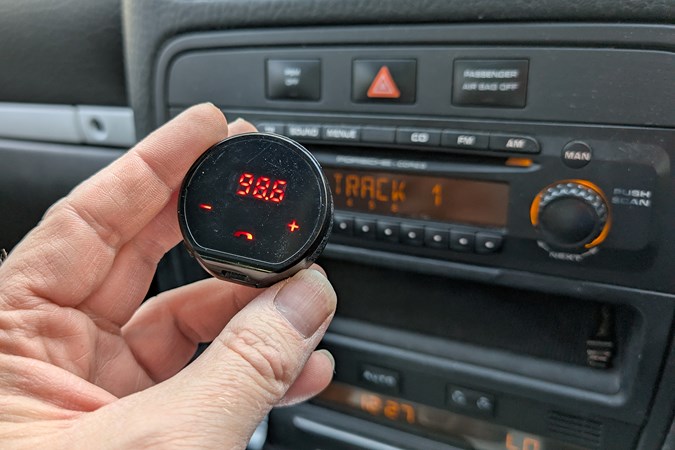
FM transmitter: the backup plan
FM transmitters broadcast your phone’s audio over an FM frequency that your car radio can pick up. Simply plug it into the cigarette lighter, pair with your phone, and tune your radio to the matching frequency.
It’s a cheap, universal solution, but sound quality can vary, and interference is common in built-up areas. Still, it’s a good option for cars without Bluetooth or AUX.
- Pros: Cheap, works in any car, easy to set up
- Cons: Lower audio quality, can suffer interference, not ideal for calls
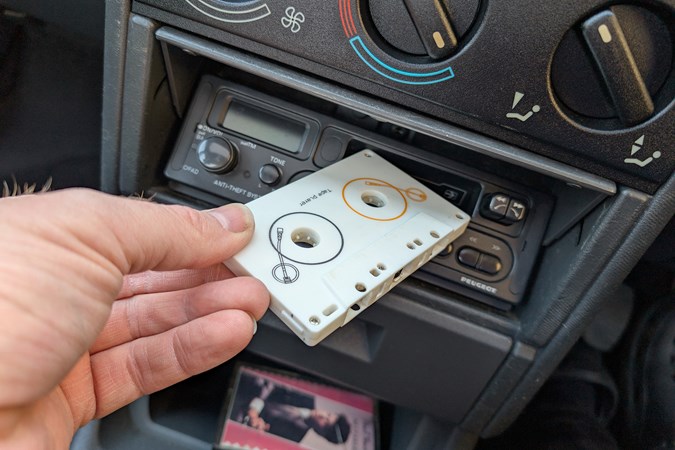
Cassette adapter: a smart classic
If your car has a tape deck, a cassette adapter is a great way to maintain its retro look while still playing music from your phone. These look like standard cassettes but contain a Bluetooth receiver or a direct audio cable.
Simply insert the adapter, and it connects to your phone, letting you stream music. Sound quality varies, especially with older tape decks, and I’ve found cheaper units can suffer from varying build quality, but it’s an easy way to keep things looking original.
- Pros: Retro, keeps the factory look, versatile
- Cons: Audio quality varies, interference can be an issue, may need charging
Bluetooth speaker: a portable solution
Bluetooth speakers are a simple way to add sound to any car without a built-in audio system. Pair the speaker with your phone, place it on the dashboard or sun visor, and you’re ready to go.
While they’re convenient, even the best models struggle against road and engine noise, and you’ll need to remember to remove or hide the speaker when you leave the car to avoid theft.
- Pros: Portable, easy to use, fits any vehicle
- Cons: Limited sound range, struggles with road noise, may need recharging
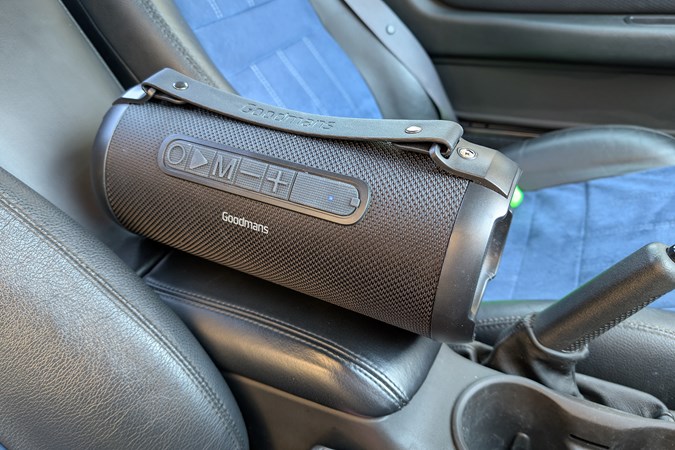
Final tips
To maintain the experience, always keep your phone charged up – especially if you’re streaming music or using navigation apps. Make sure it’s securely mounted in a sturdy phone holder so you’re not tempted to touch it while driving. Remember, interacting with your phone while driving is illegal, so always set your playlist before you start your journey.
Conclusion
There’s no reason not to have music, podcasts, or audiobooks on the go – and with your phone connected, you can even use it for navigation. I’m a big fan of using my phone as a screen in older cars, but these new smart screens are a game changer. If you want CarPlay or Android Auto in an older car, they’re a brilliant upgrade.
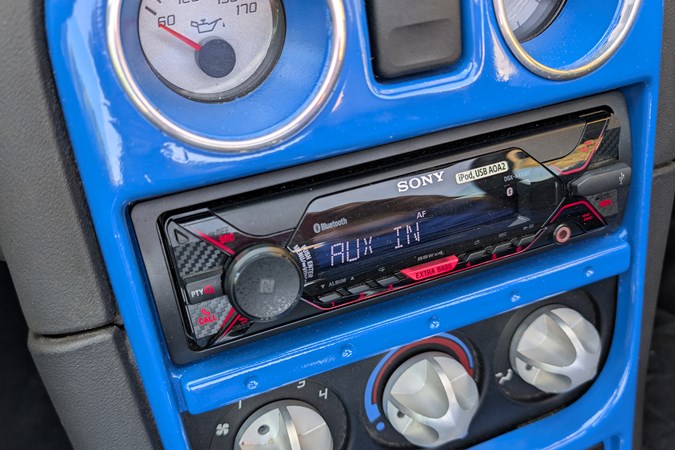
FAQs: Everything you need to know about playing music from your phone in your car
-
Can I use voice control?
Yes, you can. If you’re using Bluetooth, Apple CarPlay, or Android Auto, you can use Siri, Google Assistant, or Alexa for hands-free control. This means you can change tracks, adjust volume, or even switch playlists without taking your hands off the wheel.
-
Will an FM transmitter affect sound quality?
Yes, FM transmitters can sometimes impact audio quality. These devices work by converting your phone’s audio into an FM signal, which your car's radio picks up. While they’re convenient, they can suffer from interference, especially in urban areas. Choosing a high-quality model and finding a clear frequency can help.
-
What’s the best option for an old car with no modern features?
If your car lacks Bluetooth, AUX, or USB, your best option is a smart screen – they're brilliant! If you don't want that, the other options above have their pros and cons, but all offer a way to bring phone audio to even the oldest cars.
-
Can I use USB to play music from my phone?
Yes, if your car has a USB port that supports audio playback. Simply connect your phone with a USB cable, switch the stereo to USB mode, and you’re ready to listen. This method also keeps your phone charged while you drive.
-
Will using Bluetooth drain my phone battery?
Yes, and in my experience, quite rapidly with older phones. Bluetooth does use battery power, but the impact is usually minimal. However, if you’re streaming music for long drives, it’s best to keep your phone plugged in to maintain battery life.
-
Can I improve sound quality when streaming?
Yes, for the best audio quality, use a direct connection like USB or AUX. Make sure your streaming app is set to high-quality playback, as in my experience, these often default to low quality playback. Also, keep your phone’s volume at an optimal level for the cleanest sound.
-
What should I do if my phone won’t connect via Bluetooth?
First, try restarting your phone and your car’s Bluetooth system. If that doesn’t work, unpair and re-pair the devices, check for software updates, and ensure no other devices are connected.
-
Can I stream music without using mobile data?
Yes, you can download playlists from Spotify, YouTube Music, or other streaming apps for offline listening. This way, you don’t need to use mobile data while driving.
-
Are there any legal concerns with playing music from my phone while driving?
Yes, it’s crucial to ensure hands-free control while driving. Handling your phone while driving is illegal in many places. Use voice commands, steering wheel controls, or your car’s infotainment system for safety.
-
Can I add a new stereo to an older car to improve connectivity?
Absolutely, yes, and often for very little money. Aftermarket stereos with Bluetooth, USB, and CarPlay/Android Auto can bring modern functionality to even the oldest cars. Installation is straightforward for most vehicles, but you may need a fitting kit for a factory finish.
Just so you know, we may receive a commission or other compensation from the links on this website - read why you should trust us.


